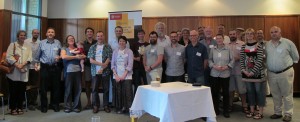During September we negotiated with the Vanuatu Cultural Centre to assist in digitising their reel-to-reel tape collection. We now have 70 of their tapes in the queue, representing work done in Malakula and in Efate since the 1960s.
Zygmunt Frajzyngier deposited his collection of various African language recordings and they will be accessioned in the near future.
Hidden treasure in the collection
In this item, Tom Dutton is talking with Ken Pike who first coined the notion of ‘etic’ and ’emic’ analysis and who was the first President of the Summer Institute of Linguistics (SIL). This recording was made in 1962 about working with Australian languages. You can hear it here (once you are signed in to the catalog).
 Follow
Follow